Forget to Make Me Breath Again
The people who stop animate in their sleep
(Image credit:
Getty Images
)
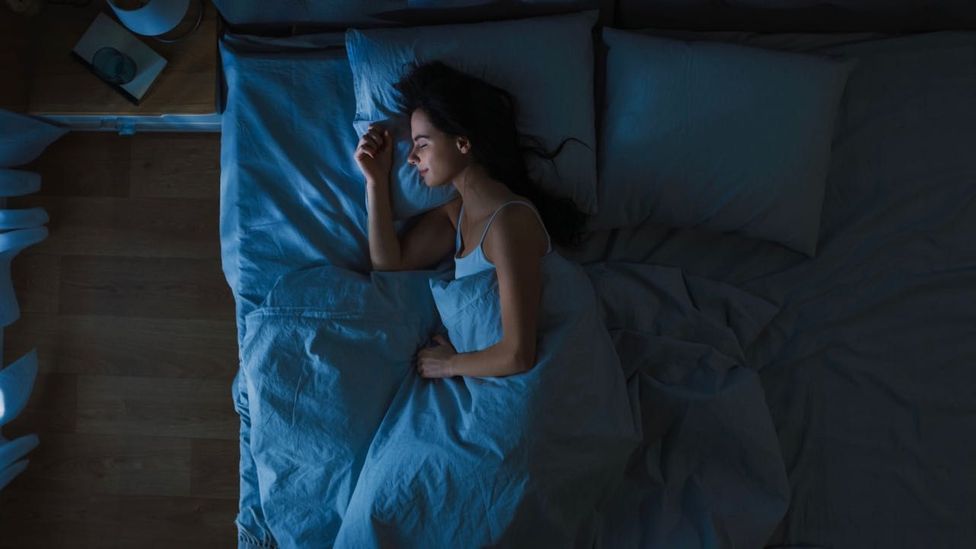
If you have slumber apnoea, chances are y'all don't realise it. But information technology's linked to diabetes, eye disease and other conditions, and it can put your life at take chances
I
I thought I was dying. During the day, I was and so tired my knees would buckle. Driving the car, my head would dip then I would catch myself. My face was lined with exhaustion.
At dark, I would sleep fitfully, legs churning, then snap awake with a starting time, gasping for breath, heart racing.
My doc was puzzled. He ordered blood tests, urine tests, an electrocardiogram – maybe, he idea, the trouble was heart disease – those night-time palpitations…
No, my heart was fine. My blood was fine.
He ordered a colonoscopy. It was late 2008 and I was 47 years old – almost time to be having one anyway. So I forced downwards the four litres (seven pints) of Nulytely to wash out my intestines then a gastroenterologist could take a good look within.
My colon was clean, the medico told me when I regained consciousness. No cancer. Not even any worrisome polyps.
However, there was one affair.
"While you were under," he said, "you stopped breathing at i point. You might want to check that out. It could be sleep apnoea."
I had never heard of it.
Yous might likewise similar:
- Why tin can't some people call back their dreams?
- The male child who stayed awake for xi days
- The tragic fate of the people who finish sleeping
Sleep is marked by dynamic changes throughout the body. Information technology's fabricated upwards of different phases, and as you lot move through them, your breathing, claret pressure and body temperature will all fall and ascent. Tension in your muscles mostly stays the same as when you are awake – except during REM phases, which business relationship for upward to a quarter of your slumber. During these, most major musculus groups ease significantly. Just if your throat muscles relax besides much, your airway collapses and is blocked. The outcome is obstructive sleep apnoea – from the Greek ápnoia, or "breathless".
With sleep apnoea, your air supply is continually interrupted, causing claret oxygen levels to plummet. Y'all then stir, gasping, trying to breathe. This tin can happen hundreds of times a night, and the ill-effects are many and severe.
Apnoea puts strain on the heart, as it races to pump claret more quickly to compensate for the lack of oxygen. Fluctuating oxygen levels besides cause plaque to build upwards in the arteries, increasing the risk of cardiovascular disease, hypertension and stroke. In the mid-1990s, the US National Committee on Slumber Disorders Research estimated that 38,000 Americans were dying every year of heart disease worsened by apnoea.
In that location's also growing evidence that the condition affects glucose metabolism and promotes insulin resistance – leading to type 2 diabetes – and encourages weight proceeds.
Then there'southward the exhaustion of never having a full nighttime's sleep, which is associated with retentiveness loss, anxiety and depression. Lack of slumber likewise causes inattention that can atomic number 82 to traffic accidents. A 2015 study of drivers in Sweden found that those with sleep apnoea are ii.v times more than likely to accept an accident than those without. It also fuels absenteeism, and people with apnoea are fired from their jobs more often than those without.
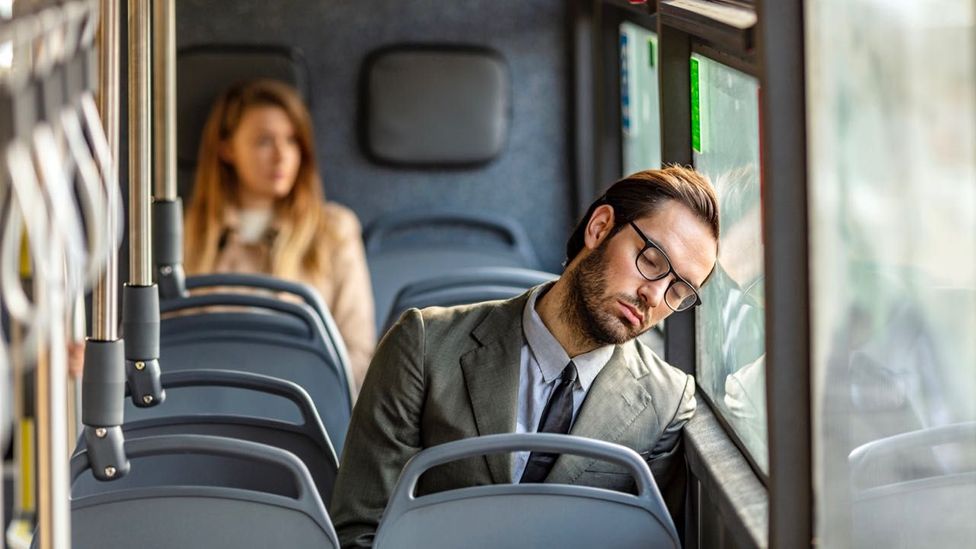
Sleep apnoea means yous never get a proficient night'due south slumber, putting a strain on your trunk and mind (Credit: Getty Images)
1 study plant that people with astringent sleep apnoea were, all told, three times as likely to die during an 18-year period as those without.
But, equally with smoking during the first decades after information technology was discovered to be lethal, there's a disconnect between the harm that the status causes and the public's perception of it equally a threat. "They fail to link sleep apnoea with its many serious comorbidities," says a report commissioned past the American Academy of Slumber Medicine, which estimates that it affects 12% of U.s.a. adults – merely 80% go undiagnosed. This prevalence is also found globally: almost a billion people effectually the globe suffer from mild-to-severe sleep apnoea, co-ordinate to a 2019 study.
Research is at present scrambling to take hold of up. Medical science has been working overtime to find a solution, from in-depth studies of hypoxia – how the body reacts to lack of oxygen – to new types of surgeries and appliances for treating the status. Of the billion or so people beyond the globe struggling with slumber apnoea – nearly probably not even aware of information technology, never mind receiving treatment – I accept deep psychological insight into simply 1: me. As the possibility that I could be facing an under-researched but potentially life-threatening health problem dawned on me, my central concern was simple: how can I set up this?
While there are enduring gamble factors for slumber apnoea – such as obesity, a large neck or large tonsils, a small jaw, or getting older – it doesn't present itself until after an individual falls asleep. The only way to diagnose it is to monitor someone'southward sleep.
Then in early 2009, prompted by both burnout and the suggestion from my doctor, I made an appointment at a place chosen Northshore Sleep Medicine in Northbrook, Illinois.
I was met by Lisa Shives, a specialist in sleep medicine. She peered down my pharynx, then suggested I take a polysomnogram – a sleep written report, where my breathing, blood oxygen levels, heart rate, and encephalon and muscle activity would be recorded.
I returned for this a few weeks later, on a Th at 9pm.
A technician showed me into a pocket-size bedroom containing a double bed and an armoire. Behind the bed, a horizontal window looked into a lab-like room stuffed with equipment. I changed into some flannel slumber pants and called the technician dorsum in. She stuck electrodes over my breast and head, then gave me a fishnet shirt to put on to hold the wires in place.
At most 10pm I clicked off the lite and soon cruel comatose.
I woke up at four.30am and fuzzily volunteered to effort to become back to sleep, simply the technician said they had six hours of data and I was free to get. Later on I got dressed she told me that my apnoea was "severe" and that Shives would give me the details subsequently. I had planned to take myself out to a celebratory breakfast, but instead I just went home. I wasn't hungry – I was scared.
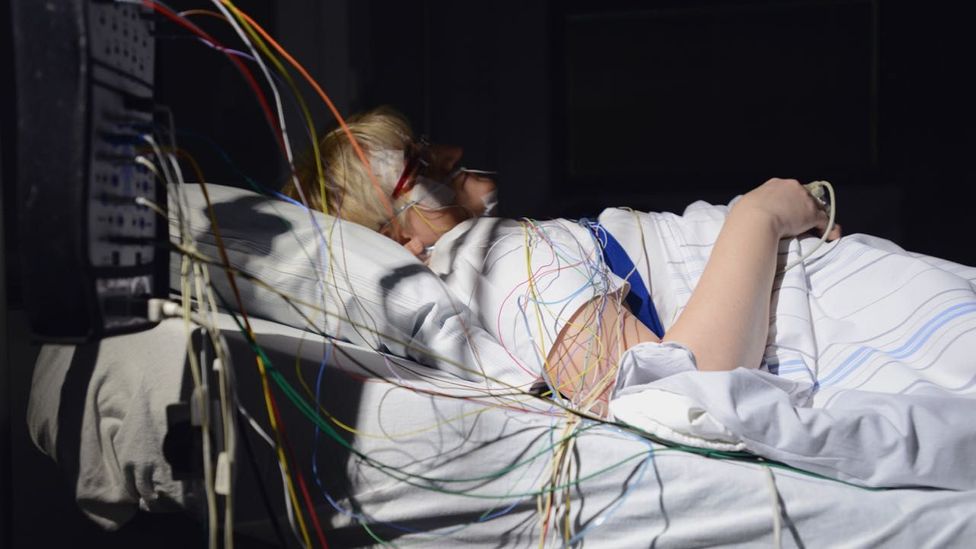
The merely way to diagnose sleep apnoea is to monitor someone'southward slumber (Credit: Getty Images)
Several weeks later I was dorsum at Northshore, this time during daylight. Shives sat me downward in front of a screen full of multi-coloured squiggles and numbers, with a pocket-sized black-and-white video of me sleeping in the corner. Information technology was unsettling, similar seeing a crime scene prototype of myself, expressionless.
Speaking of decease, I had stopped breathing, Shives told me, for equally long as 112 seconds – almost two minutes.
A normal level of blood oxygen saturation, equally measured past a pulse oximeter, is betwixt 95% and 100%. People with chronic obstructive pulmonary disease might have a reading in the upper 80s. Mine at times had dipped to 69%.
How bad is that? The World Health Arrangement, in a surgical guide, suggests that should a patient's blood oxygenation fall to 94% or beneath, they should immediately be checked to come across whether an airway is blocked, a lung has complanate or in that location is a problem with their circulation.
My options were few. I could, Shives said, have a uvulopalatopharyngoplasty, a procedure as ghastly as its name: removing tissue from my soft palate and widening my airway at the back of my throat. Only information technology would be bloody, and recovery could be long and troublesome. Shives raised the possibility but to immediately dismiss it, which I later suspected was to take the sting off the second choice: the mask.
For the commencement decade and a half after sleep apnoea was identified, at that place was just one treatment option. Yous could have a tracheotomy – a surgical procedure where a hole called a tracheostomy is cutting low in your pharynx to bypass your collapsing upper airway. It offered reliable relief simply had pregnant complications of its own.
"In the early days, doctors didn't know much," says Alan Schwartz, who recently retired every bit a professor of medicine at Johns Hopkins University in Baltimore after years of pioneering exploration on slumber ailments. "In the '80s, when I began, we were seeing the tip of the iceberg, the near severe apnoea patients. They'd wake up with a headache, from their bodies' tissues not getting enough oxygen. Feeling very fatigued, as you lot might expect. They'd go depressed, there were mood changes, short temper."
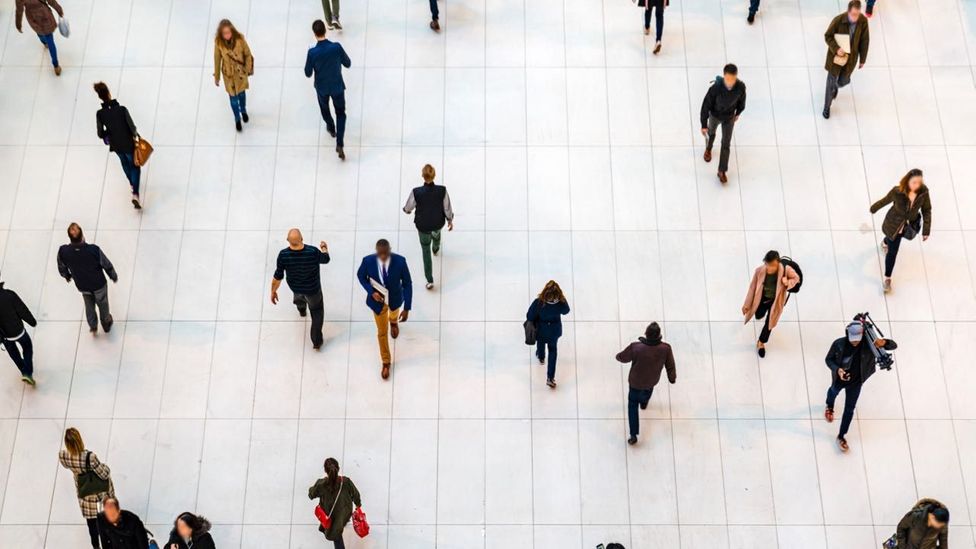
A 2017 report plant that sleep apnoea might be present in up to 40% of the general population in Frg (Credit: Getty Images)
Despite these woes, patients were understandably wary of having a tracheotomy, which today is "a surgical pick of final resort" performed only in cases of extreme medical urgency.
"I was always a very loud, aggressive snorer, waking up in the eye of the nighttime, gasping," says Angela Cackler of Hot Springs, Arkansas, who was diagnosed with slumber apnoea in 2008, though she believes information technology began when she was "tiny".
By 2012 her heart was failing.
"I went into the emergency room because I was actually tired, not feeling well," Angela says. "I found out it was heart failure. The next morn, they said, 'We are going to do a tracheotomy.'"
And how has she adapted to the tracheostomy later seven years?
"It'southward a battle to deal with," she says. "In that location is a lot of cleaning. It's nasty. It's piece of work. You don't exhale normally. Your natural humidifier is completely gone. Yous accept to supplement that. You're susceptible to infections." The biggest drawback for her is that it keeps her from swimming, a recreation she once enjoyed. She as well hates the looks she gets from people.
That said, the procedure did eliminate her apnoea. "I don't snore and I tin breathe and sleep better."
Would she take it washed over again?
"If I had to do it over again, yes, admittedly," she says. "It has saved me."
Though they work in treating sleep apnoea, the life-altering drawbacks of tracheotomies inspired Colin Sullivan, today a professor of medicine at the University of Sydney, to invent the Continuous Positive Airway Pressure machine, or CPAP, that would become the new first-line handling.
In the late 1970s, he had gone to the University of Toronto to assist a sleep researcher investigate respiratory command in dogs during sleep. The inquiry involved delivering experimental gases to dogs through a tracheostomy. Returning to Australia, Sullivan designed a mask that could fit around a dog's snout to evangelize the gases that way instead.
A human patient scheduled for a tracheotomy only "eager to know if at that place was annihilation else that might work" – Sullivan'due south words – inspired him to attempt to modify the domestic dog mask for use by people.
Sullivan took plaster casts of patients' noses, creating a fibreglass mask that tubing could be attached to. The blower was salvaged from a vacuum cleaner, with a head harness crafted from the inside of a cycle helmet.
In a 1981 paper, he and his colleagues described how, when plumbing equipment the mask over the noses of five patients, CPAP "completely prevented the upper airway occlusion".
Sullivan patented the device, and after a few years of development, he had a version that could exist given to people with apnoea for use outside a lab. Today, millions use CPAP machines, though success ofttimes requires perseverance.
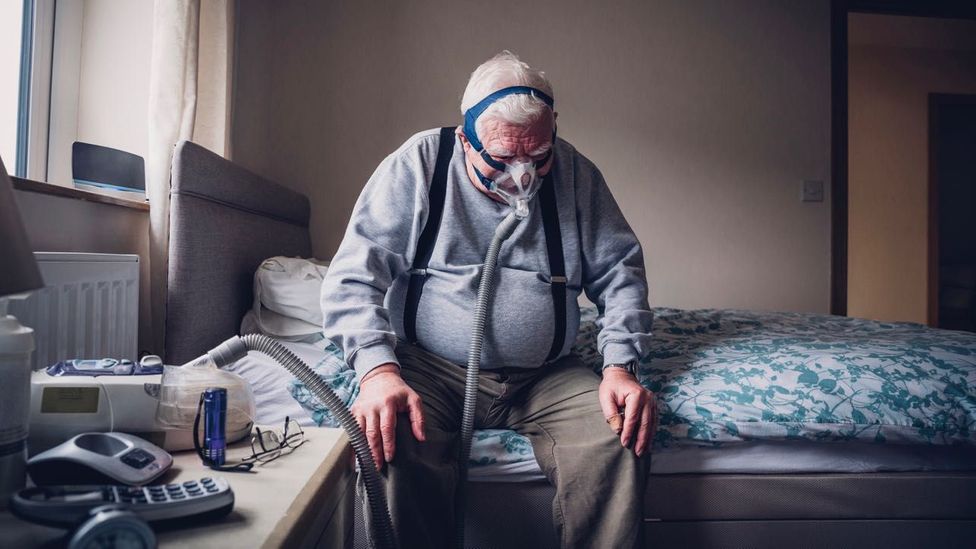
CPAP machines are the first-line treatment for sleep apnoea simply many sufferers notice them frustrating to use (Credit: Getty Images)
Merely as more than patients were treated and the CPAP machines' technology was refined – they can now upload data automatically to the deject for assay – doctors fabricated an unwelcome discovery: their master treatment oft didn't work.
"In the belatedly '80s, nosotros'd sit downward with a patient and ask, 'How'due south it going with the mask?'" recalls Schwartz. The patient would report, falsely, how well the mask was working. "Until we began to put electronic chips in the machines in the late '90s, we never appreciated how lilliputian they were using their machines."
The chips tracked how long the masks were used, and doctors found out they frequently weren't existence worn at all. "The mask is similar something from a bad scientific discipline fiction movie: big, bulky and obtrusive," a New York Times commodity reported in 2012. Studies suggest somewhere between a quarter and one-half of users abandon their automobile within the first year.
I certainly did.
The CPAP did make me feel meliorate the offset night I wore it – once again under ascertainment at Northshore. I woke refreshed, warning, feeling more energised than I had in years.
But the positive effect of the mask tapered off considerably after that first deliciously restorative dark. Outside of the lab I couldn't reproduce the benefits. That beginning C in CPAP is for continuous, meaning that it pushes in air when you lot exhale in but it besides pushes in air when you exhale out. Y'all are fighting confronting it as you lot exhale, and I would wake up suffocating. There was the continual embrace of the mask, clamped to my face. Air would leak out around the edges and dry my eyes, even though they were closed.
Most nights at some point I would wake up and rip the mask off. In the morning, I would check the stats and see how picayune it was working. I went dorsum to Northshore, where Shives would fiddle with the pressure settings or encourage me to attempt other masks. I returned several times, and began to feel like a regular. Nothing seemed to work.
Finally Shives, exasperated, said, "You lot know, if you lot lost 30 pounds, the problem might go away."
While it is possible to exist thin and have sleep apnoea, obesity multiplies the probability.
I'thou 5'9 and weighed 150 pounds when I graduated from college. In 2009, I weighed 210 pounds.
So in 2010, I decided to lose the weight. I had a goal – the xxx-pound effigy Shives recommended. And I did information technology, going from 208 pounds on i January 2010 to 178 pounds on 31 December. Losing the weight did the trick. No more mask.
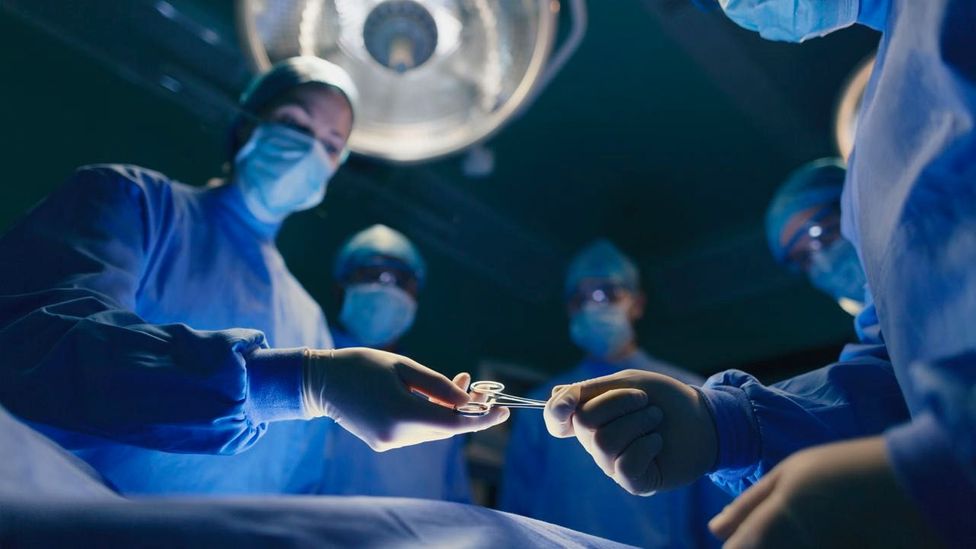
People with sleep apnoea are at increased take a chance for certain complications during surgery (Credit: Getty Images)
Simply it turns out I mistook winning a single year'south battle with victory in the state of war. The pounds I had lost somehow found me once again, 20 of the 30 creeping slowly back on over the next decade. And with them, the apnoea came back. Not that I realised it until the summer of 2019, when I underwent spine surgery. The pre-surgery questionnaire at Northwestern Memorial Hospital in Chicago asked if I sometimes snored, if I was often tired and if I had always been diagnosed with sleep apnoea.
Yes, yes and yes.
"It's important to screen people for sleep apnoea considering information technology could be a risk when having surgery," says Phyllis Zee, director of the Center for Circadian and Sleep Medicine at Northwestern University's Feinberg School of Medicine. It can be a run a risk factor for poor outcomes later on as well.
The questions about snoring and exhaustion are important because, despite the efforts of medical science to spread the word, most people with apnoea don't realise they have it.
A 2017 German study found that while obstructive sleep apnoea might be present in equally much as 40% of the general German population, simply 1.8% of hospital in-patients were identified as having it, which the authors said was maybe due to low awareness of the condition among both patients and hospital staff.
According to an article in the New England Journal of Medicine, there's an "epidemic" of sleep apnoea amongst US surgical patients. 1 in four candidates for elective surgery accept it, but for certain groups, the rate is even higher – eight in 10 patients existence treated for obesity, for instance, accept it, resulting in a range of risks.
"Patients with sleep apnea undergoing orthopedic or general surgery appeared to be at increased risk for pulmonary complications and demand for intensive intendance services, which significantly increase wellness care costs," the authors noted.
My revealing on the pre-surgical questionnaire that I previously was diagnosed with sleep apnoea had immediate effects. My spine surgery was done quickly – taking identify a calendar week subsequently I first went over my MRI with a surgeon – just in that brief flow the hospital insisted I undergo a home sleep study to guess the severity of the apnoea. Instead of going to a slumber centre, I brought abode a kit that instructed me how to identify sensor bands around my breast, a pulse oximeter on my finger, and a clip under my nose to monitor breathing. In that location was no EEG, and one drawback of these take-home tests is the units never know if you are actually asleep or non while the readings are being made.
Still, lowering the cost and inconvenience of diagnosis offers hope that more people will observe they have apnoea – the expense and time needed to have an in-lab polysomnogram is thought to be one reason diagnosis rates are so low.
The test found I had moderate apnoea – perhaps a office of keeping that concluding ten pounds off – information the anaesthesiologist used when putting me under.
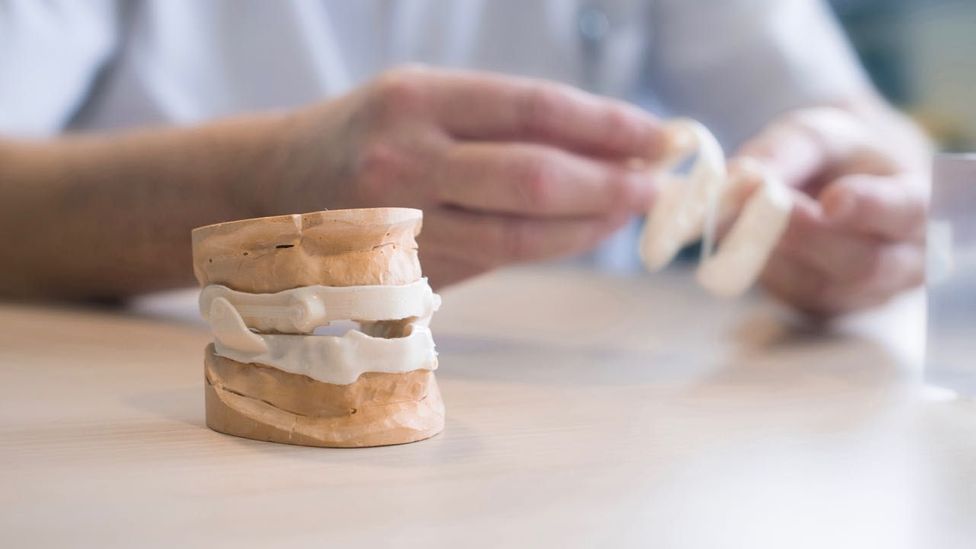
A dental appliance that brings the lower jaw frontwards has been used to care for sleep apnoea since the 1990s (Credit: Getty Images)
"Weight loss is curative," says Philip Smith, a professor of medicine at Johns Hopkins School of Medicine and a specialist in pulmonary disease and sleep apnoea. "The problem is, people tin can't exercise it."
Add together to this the fact that many patients can't utilise CPAP, and it becomes articulate that there's a "critical unmet demand," says Schwartz. So over the past ii decades, a serial of other treatments accept been rolled out.
In the mid-1990s, a dental appliance began to exist used by those who couldn't tolerate the mask.
"Obstructive sleep apnoea happens in the back of your oral cavity," says David Turok, a full general dentist with a exercise concentrating on apnoea. "Basically, your tongue doesn't have plenty room in your mouth and pushes back into your airway. CPAP forces the tongue out of the fashion by forcing air down. An oral appliance brings the lower jaw forrad, and the tongue comes with information technology."
Call up of it every bit a brace, using upper teeth equally an ballast to push the lower teeth, and with them the lower jaw, forward, widening the airway at the back of the throat.
Like CPAP, the oral appliance is likewise an imperfect solution. It holds the jaw in an unnatural position, so it can be uncomfortable, and prolonged use can change your bite, leaving the jaw forrard. The pressure of it tin can also modify the position of your teeth a petty bit.
Withal in his years of working on apnoea treatments, the bulk of Turok'due south patients take had success with an oral appliance.
"But these are mild-to-moderate cases," he says. "For someone with severe sleep apnoea, CPAP is preferred. I never say you accept a pick. You lot've got to endeavor CPAP first."
He says that the surest manner to accost apnoea, for patients who can't conform to either CPAP or oral appliances, is jaw-advancement surgery, a better procedure than widening the soft tissue of the throat.
"Recovery is easier because it is bone healing instead of tissue healing," Turok says. Though the surgery is non without drawbacks, including the demand to break your lower jaw in two places and take your rima oris wired shut after surgery.
A farther strategy is, in essence, an electrical version of the oral appliance: hypoglossal nerve stimulation (HNS), where a minor electrical charge is used to make the tongue contract and stop it falling backwards during slumber.
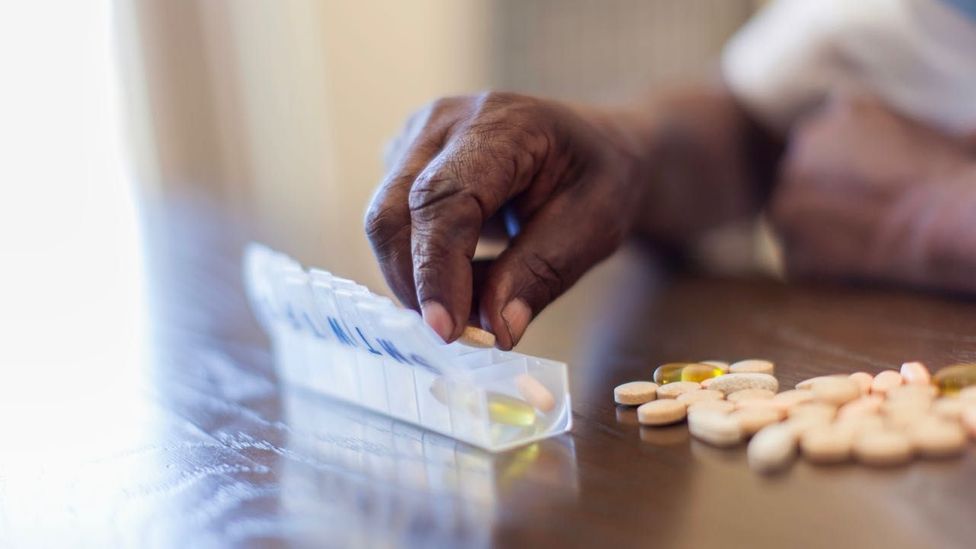
Researchers promise to have a pill to care for sleep apnoea in the next decade. (Credit: Getty Images)
Lawrence Epstein, assistant medical director of the Sleep Disorders Service at Brigham and Women's Hospital in Boston and past president of the American University of Sleep Medicine, calls CPAP "the recommended first-line therapy," merely says treatment ultimately is "more almost knowing all the options and trying to tailor the therapy both to what the patient has and what they would be willing to utilise".
He points out that while obstructive sleep apnoea is viewed as a single status, it is prompted past a multitude of causes – facial and throat configuration, muscle tension, obesity – and and so not every treatment works the aforementioned for every patient.
"Nosotros have very constructive treatments, but all have some downsides. It's a matter of matching the correct treatment to the right patient."
There really is merely one test: "Make certain it works," he says, noting that "we notwithstanding have a ways to go" when it comes to perfecting treatment.
Much hope is centring on that treatment someday existence a pill.
"The future is neurochemical," says Smith of Johns Hopkins. "We can treat apnoea in a mouse. Probably in the next ten years, maybe 5, you'll be able to take medication for slumber apnoea, because it's a neural-chemical problem. It's non obesity itself, not fat pressing on the airway, but fat excreting certain hormones that makes the airway plummet." Schwartz is more circumspect – he thinks "it's a combination of the two" – but has also been investigating hormones secreted by fat cells.
There are also promising human trials. Phyllis Zee was co-lead author of a 2017 paper that constitute that dronabinol, a synthetic version of a molecule found in cannabis, is "safe and well tolerated" and lowers the severity of sleep apnoea compared to a placebo.
"The CPAP device targets the physical trouble but non the cause," Zee said at the time of publication. "The drug targets the brain and fretfulness that regulate the upper airway muscles. It alters the neurotransmitters from the brain that communicate with the muscles."
There are other hopeful signs. A small double-blind international report of two drugs used in combination – atomoxetine and oxybutynin – constitute that they "greatly reduced" apnoea, cutting airway obstructions during sleep by at least 50 per cent in all of the participants.
Merely for a person like me, struggling with apnoea now, the look might be a long 1.
"They've been predicting in 20 years we're going to have some drug to bargain with the trouble," says Schwartz. "The only problem is, it's been a rolling 20-yr backlog. We'll get there, I accept no dubiety. There are a couple of promising pharmacological approaches that may be on the horizon."
Patience and healthcare are often linked, whether waiting for new treatments creeping to marketplace, waiting for changes in lifestyle to bear fruit, or even waiting to meet the right specialist. For me, information technology was back to long-term dieting and an appointment with a sleep specialist at Northwestern.
Every bit an indicator of just how many people are dealing with this status, I got in touch with Northwestern in July, when I had my surgery and learned the apnoea had returned. They said they would schedule me for the first available appointment – not until tardily October.
This is an edited version of an article that commencement appeared on Mosaic and is republished here under a Creative Commons licence.
--
Bring together one 1000000 Future fans by liking us on Facebook, or follow us on Twitter or Instagram.
If you liked this story, sign up for the weekly bbc.com features newsletter, called "The Essential List". A handpicked pick of stories from BBC Future, Culture, Worklife, and Travel, delivered to your inbox every Friday.
Source: https://www.bbc.com/future/article/20200305-sleep-apnoea-the-people-who-stop-breathing-in-their-sleep